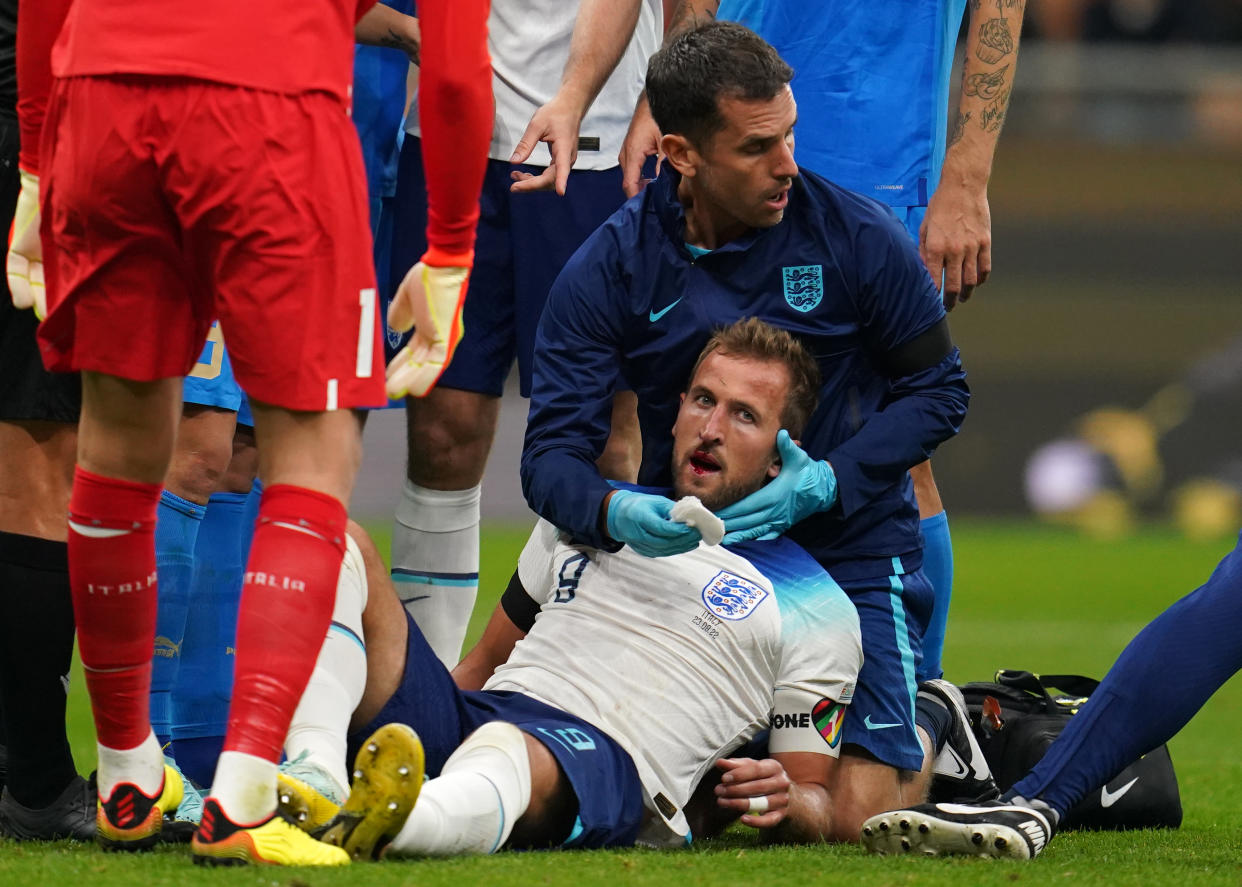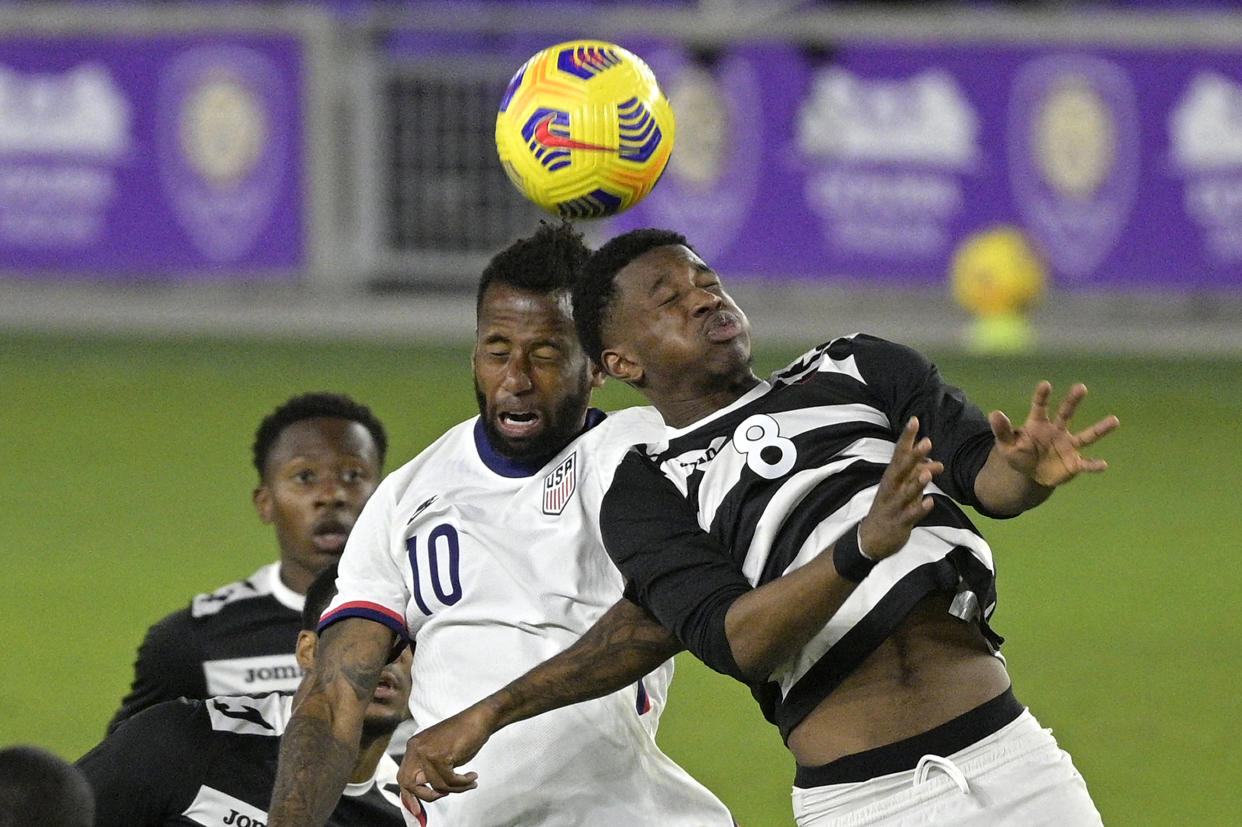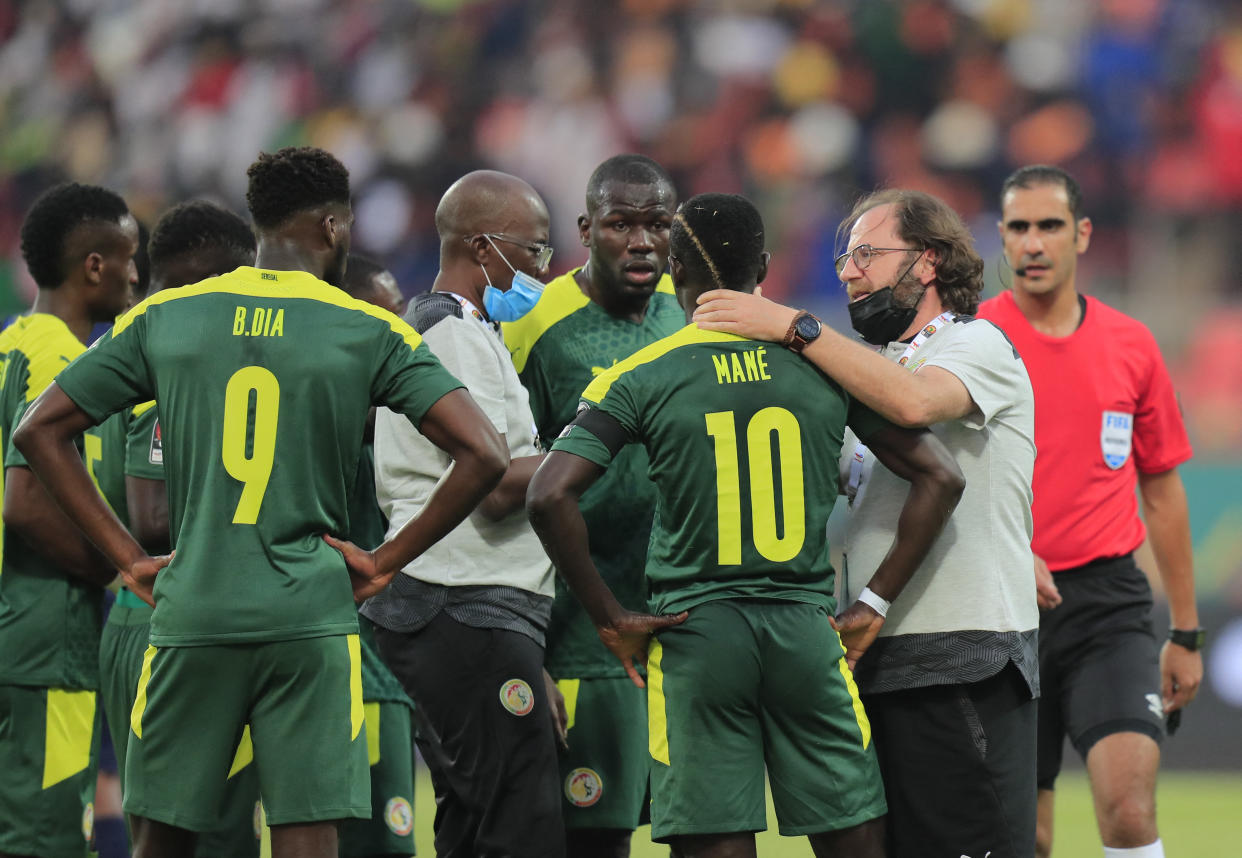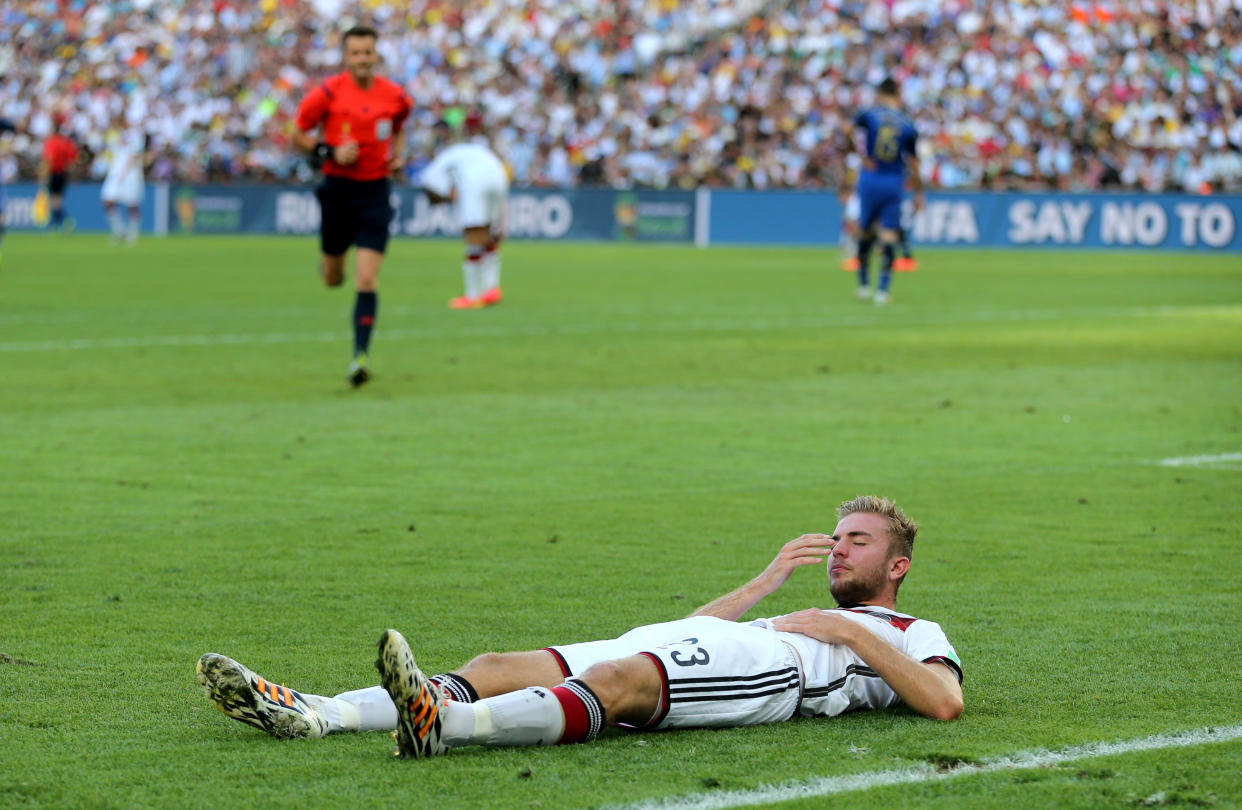Think the NFL handles concussions poorly? World Cup soccer is ‘stone age’
[World Cup: Viewer's guide | Group previews | Top 30 players | Power rankings]
Chris Nowinski has spent the better part of the 21st century highlighting the damage that sports can do to brains. He has watched concussed athletes stagger off fields, and urged doctors to protect them, and so, naturally, he has been a frequent critic of the NFL. He once called the league’s concussion protocol “a fraud.” More recently, he accused its employees of “ignorance” and “gaslighting.” He says that even the updated protocol is “very risky.”
But in an interview last year, Nowinski, who leads the Concussion Legacy Foundation, acknowledged that “the NFL protocol has gotten better every year.” He explained how America’s grandest sporting entity had “learned from mistakes” and “closed a lot of the gaps in the system” — and done so, most importantly, in collaboration with its players. Other experts opined that the NFL’s protocol, after years of justified rebuke, had become something of a gold standard in professional sports.
But international soccer’s, on the other hand?
“Stone age,” Nowinski said.
Whereas the NFL collectively bargained its protocols with the NFL Players Association, and whereas the NFL can punish teams who don’t follow those protocols, and whereas the NFL requires independent doctors to clear players before they return to fields, most soccer leagues and governing bodies do none of that. FIFA, the sport’s global governor, has multipleprotocols but no means nor willingness to enforce them. At the last two men’s World Cups, players have suffered apparent brain injuries and, despite being obviously impaired, remained in games.
Ever since Germany’s Cristoph Kramer wobbled through the 2014 World Cup final — a game that became a mostly black hole in his memory — player representatives and medical experts have howled for change. Ahead of the 2022 World Cup, which begins Sunday, FIFA promised that video replays and “spotters” will help team doctors identify concussions. And it reiterates, in official Qatar 2022 regulations and elsewhere, that any player with even a “suspected” concussion is “express[ly] prohibit[ed]” from returning to the pitch.
Yet it leaves return-to-play decisions solely in the hands of partisan team physicians. It has not codified punishments for those who violate the prohibition. And it has not addressed the root cause of soccer’s concussion conundrum: the laws of the game.
Soccer is the world’s only prominent contact sport that does not, under any circumstance, allow a substituted player to re-enter a match. Dozens of resonant voices — including those of FIFPRO, the global players’ union, and England’s Football Association and players’ association — have called for the introduction of “temporary concussion substitutes.” But IFAB, soccer’s rule-making body, continues to resist those calls, and has instead been trialing an alternate solution — one that, in the words of Adam White, the Concussion Legacy Foundation’s UK executive director, “hasn't worked.”
“The inability to have a temporary substitution,” Nowinski said, is both medically and “ethically inappropriate.” The amendment needed “to happen yesterday,” he said in a 2021 interview with Yahoo Sports. But still it hasn’t.

Why FIFA's concussion protocol doesn't go far enough
FIFA’s 19-page Medical Concussion Protocol and its wide-ranging Emergency Medicine Manual outline a series of guidelines that largely align with international consensus. “If there is a SUSPICION of a concussive injury at any stage,” the protocol states, “you should remove the player from the match or training session and assess and treat them appropriately.” Both documents then recommend the widely used Sport Concussion Assessment Tool (SCAT) for sideline exams. The SCAT includes a series of tests for so-called “red and orange flags.” To return to a game, in addition to neither self-reporting nor displaying any red-flag symptoms, a player must answer several “Maddocks questions” and pass tests of strength, coordination and balance.
“The SCAT should take a minimum of 10 minutes to complete,” FIFA’s protocol states.
And yet hardly any team physician at soccer’s highest level ever follows that advice.
The problem, of course, is that it is just advice, not a requirement. And no doctor would willingly disadvantage his or her team by forcing them to play 10-v-11 for 10 full minutes. World Cup rules (and others) only allow for a three-minute stoppage before play must resume. They effectively require a binary decision — permanently remove or return — to be made before a thorough evaluation can take place.
And so, “time and time and time again,” White says, after head-to-head clashes and 70-mile-per-hour shots to the temple, players who “clearly seem to be concussed” are ushered back onto fields. In 2018, France’s Blaise Matuidi was flattened by an elbow, and propped upright with his eyes wide in horror … and then sent back into a World Cup semifinal less than two minutes later. He was only later removed after dropping to the turf in a daze, and missing his own mouth with a water bottle.
Similar decisions are made weekly across soccer’s sprawling landscape, and they endanger players, experts say. Competing while concussed ups a player’s risk of exacerbating their brain injury, but also of “other bodily injury, orthopedic injuries,” says Dr. Robert Cantu, a leading concussion expert. “Because your reaction times, your coordination, is not normal in the concussed state.”

IFAB, like FIFA, acknowledges this, and states in writing that, “where there is any doubt about a player having been concussed, the player should be protected by being permanently removed from the match.” But it neither incentivizes nor compels that behavior. In 2021, it began allowing leagues to pilot “permanent concussion substitutions” — an extra sub, beyond the standard limit of five, specifically for a player with a suspected brain injury. But the added allowance, according to Jonas Baer-Hoffmann, the secretary general of FIFPRO, “doesn’t change anything really substantially about the parameters, the pressures, the insufficient circumstance for diagnosis.”
Temporary subs would ease the time pressure on evaluations, because there’d be no more 10-v-11 in the interim. Players could escape from the chaos of a match to the quiet of a medical room while a teammate took their place. The subs would “allow healthcare professionals to conduct more comprehensive assessments,” advocates wrote in a letter earlier this year, “and send an important signal to every person in the game to treat head injuries with the necessary care.”
An IFAB spokesman, responding to emailed questions, essentially argued that temporary subs are an imperfect solution, in part because concussion symptoms can present themselves 30 minutes or even a day after the concussive blow. Advocates acknowledge this imperfection, but argue that temporary subs would still offer a significant improvement on the status quo.
One other proposed solution would be to retain NFL-style unaffiliated neurotrauma consultants, who’d collaborate with team doctors on evaluations, and would do so without the inescapable pressure that comes with being employed by a team that wants its 11 best players on the field.
Another solution would be to modify the sideline protocol and mandate it, with punishments for non-compliance. The recommended 10-minute minimum inherently clashes with the urgency of a soccer match, but experts say it’s flexible and often misunderstood. No number of minutes can fully rule out a concussion. Safety exists on a continuum: the longer the examination, the lesser the risk. “I mean, we could spend an hour doing different incremental pieces of exam on the sideline,” the NFLPA’s longtime medical director, Thom Mayer, told Yahoo Sports last year. They often only spend a few minutes, however, because there are “diminishing returns” the longer they go, Mayer and others said.
But who gets to decide how long the evaluations should be?
In the NFL, and in any responsible league, the answer is clear: the players who take on the risk.
In international soccer, Baer-Hoffmann says, “the problem is that the decision-making structures around this are, frankly, still quite antiquated. Unions and player reps don't have the kind of bargaining power that they should have, considering that it's about the players' health.”

'We're pretty close to a tipping point'
FIFPRO is a trade union that “unites the voice” of thousands of players worldwide. It has “constant engagement with FIFA,” Baer-Hoffmann says, on a variety of issues. And it has been consulted by IFAB on this one specifically.
For years, whenever the opportunity arises, its chief medical officer, Vincent Gouttebarge, has advocated for temporary subs. And has IFAB taken that position into account?
“What does ‘taking into account’ mean?” Baer-Hoffmann responds with a laugh. “They haven't followed it, let's put it that way.”
They have listened, but IFAB’s board comprises executives from FIFA and four British soccer federations — and nobody else. They consult their “advisory panels” and “subcommittees,” which comprise dozens of stakeholders, but only a few, at most, represent players. The IFAB spokesman said that “the decision not to introduce temporary concussion subs has been supported by the vast majority of stakeholders at all IFAB meetings that have covered concussion trials so far” — but critics would point out that the composition of those meetings, and the decision-making structures, are part of the problem.
They illustrate a broader power imbalance in soccer, where players rarely have formal say in how their sport is governed. “It's oftentimes not the human impact that dominates the ultimate decision,” Baer-Hoffmann says. “It is what it does to the flow of the game, what it may do economically. It's not a human-centered decision-making paradigm.”
The disconnect is particularly wide in the debate around concussions. “In the United States, this is predominantly an employment and a health and safety question,” Baer-Hoffmann says. “Whereas in [global] football this is still mainly considered as a competition question, in terms of the laws of the game.” The people making decisions are traditionally concerned with fairness, not safety. Some worry that, for example, players could feign injury to grant their team a tactical advantage — rather than worrying primarily about players’ short- and long-term health.
Slowly, though, attitudes have been shifting. “I think we're reaching a point,” Baer-Hoffmann says, “where the employers, the leagues … they're starting to realize their obligations here.” Governing bodies in Britain and North America have also begun grappling with not only the impact of concussions but the probability that repeated subconcussive blows can lead to the degenerative brain disease CTE. Some have banned headers at young ages. And some stakeholders believe those bans are just the start.
“We need to start considering: What are the strategies, approaches to mitigate against CTE?” White says. “And that's about reducing exposure to head impacts. And that's hard, because then we really need to fundamentally look at the game. We need to think about things like how many head contacts we're gonna do in training. … I'd also look at the game and start to think about, how can we reduce heading in gameplay?”
Many medical experts argue that this mitigation of long-term consequences is actually the more pressing issue. But in the immediate term, most discussions surround concussions. National players unions, including England’s PFA and Major League Soccer’s PA, have been pushing for temporary subs. Two sources told Yahoo Sports that multiple leagues, including MLS, are themselves now pushing harder than before.
“I think we're pretty close to a tipping point,” Baer-Hoffmann says. “The current approach to this will simply not stand any longer.”

